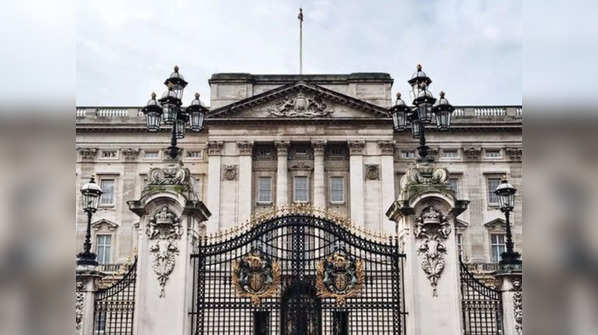- News
- lifestyle
- home-garden
- Photos from inside the Buckingham Palace that give a glimpse of the life of British Royals
Photos from inside the Buckingham Palace that give a glimpse of the life of British Royals

Photos from inside the Buckingham Palace that give a glimpse of the life of British Royals
Buckingham Palace is a symbol of British royalty and tradition. It is the official residence of the monarch in London. This grand structure is famous not only for its stunning exterior and the Changing of the Guard ceremony but also for its remarkable interior, which houses 775 rooms filled with history and elegance. Each room in Buckingham Palace itself forms a rich and interesting story of British history, art, and culture. Although only a few rooms are accessible to the public, they provide an intriguing insight into royal life.

The Throne Room: A symbol of power
The Throne Room is a magnificent room within Buckingham Palace, often used for formal photographs and important ceremonies. In has thrones upon which Queen Elizabeth II sat when she was crowned in 1953. The two thrones stand against the work of architect John Nash a brilliant, deep, bright-colored backdrop.

The State Rooms: A royal welcome
The State Rooms of Buckingham Palace are open to visitors during the months of summer, offering a glimpse into the grandeur of royal life. Not just beautiful, but embeded in history and symbolism, the rooms reflect the grandeur of the monarchy. Playing a crucial role in various royal ceremonies and receptions.

The White Drawing Room: A Space for royal gatherings
The White Drawing Room is often regarded as the most sophisticated among the State Rooms. It serves as a reception area where King Charles III and other royal family members convene before official events. Adorned with ornate details and a white and gold colour scheme, this room exudes elegance and regality. A hidden door behind a mirror allows for discreet entries and exits, adding an element of intrigue to this already captivating space.

The Ballroom: A dance through history
The Ballroom is the largest of all the State Rooms and an architectural wonder in its own right. Opened in 1856 to celebrate the end of the Crimean War, this magnificent room features intricate frescoes, a musicians’ gallery, and an impressive Throne Canopy. With a capacity to seat up to 170 guests, it is primarily used for State banquets hosted by King Charles III. The grandeur of the Ballroom not only serves as a backdrop for royal events but also represents a significant chapter in British history.

The State Dining Room: Dining in lavishness
The State Dining Room is another key area within Buckingham Palace, known for its stunning chandeliers and an iconic portrait of Queen Elizabeth II by Pieter Pourbus. This room is primarily reserved for official luncheons, dinners, and grand events. Its elegant decor reflects both tradition and sophistication, making it an essential part of royal entertaining.

The Music Room: A musical retreat
Originally called the Bow Drawing Room, the Music Room has remained unchanged since its completion in 1831. This room serves as a gathering place for guests before formal dinners or banquets. It is also where royal christenings take place; notably, King Charles III was baptized here with water from the River Jordan. The exquisite parquet floor made from various woods showcases exceptional craftsmanship and adds to the room's charm.

The Picture Gallery: A gallery of masterpieces
Nestled within Buckingham Palace is the Picture Gallery, an impressive showcase of fine art that highlights the monarchy's long-standing support for the arts. This expansive gallery features an exquisite collection of European masterpieces that offer visitors a visual journey through Western art history. The artworks displayed are regularly changed, ensuring that each visit can reveal new treasures from renowned artists such as Titian, Rembrandt, and Van Dyck.

The Gardens: Nature’s majesty
Surrounded by London’s bustling atmosphere, Buckingham Palace's gardens provide a serene escape into nature. Spanning 39 acres, these gardens are not only London's largest private garden but also a testament to British horticultural artistry. They serve as both a private retreat for royalty and a picturesque setting for official events like the Queen’s annual Garden Parties. Visitors can appreciate this lush landscape that complements the palace's grandeur.









